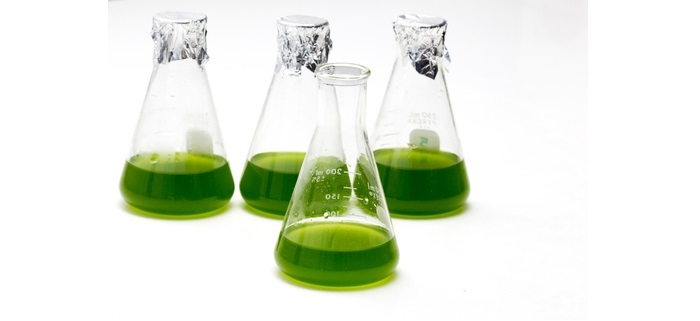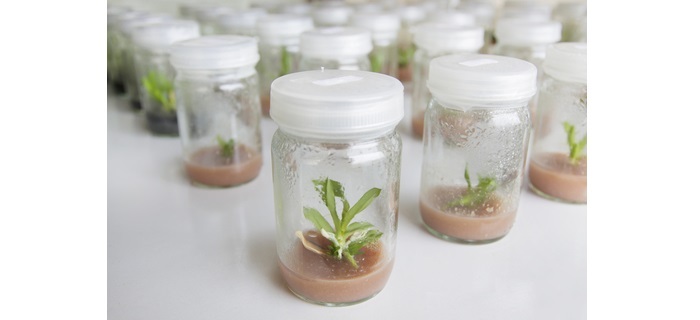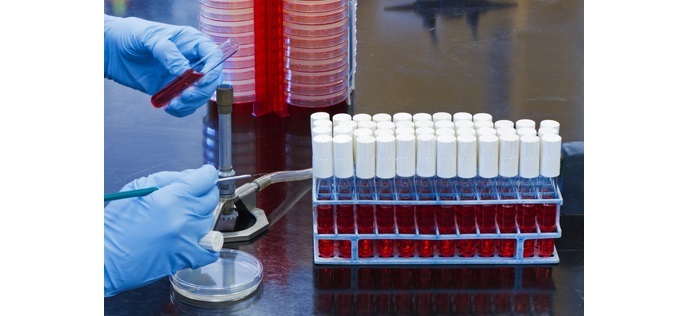
 Data Structure
Data Structure Networking
Networking RDBMS
RDBMS Operating System
Operating System Java
Java MS Excel
MS Excel iOS
iOS HTML
HTML CSS
CSS Android
Android Python
Python C Programming
C Programming C++
C++ C#
C# MongoDB
MongoDB MySQL
MySQL Javascript
Javascript PHP
PHP
- Selected Reading
- UPSC IAS Exams Notes
- Developer's Best Practices
- Questions and Answers
- Effective Resume Writing
- HR Interview Questions
- Computer Glossary
- Who is Who
Culture Media: Types and Uses
Introduction
A growth medium, commonly known as a culture medium, is a solid, liquid, or semi-solid that is intended to foster the growth of a population of microorganisms, cells, or miniature plants, such as the moss Physcomitrella patens, through the process of cell proliferation. Various cell types are grown in various types of medium.

Growth Media
The two primary categories of growth media are those used in cell culture, which employ certain cell types obtained from plants or animals, and those used in microbiological culture, which are used to grow microorganisms like bacteria or fungi.
Nutrient broths and agar plates are the most typical growth media for microorganisms; nonetheless, the growth of microorganisms and cell cultures can occasionally need the use of specialized media.
Due to their intricate dietary needs, some organisms?referred to as fastidious organisms?need specialized settings. For instance, viruses are necessary intracellular parasites that demand a growing substrate with living cells.

Types and Uses of Culture Media
In-vitro plant cell culture requires careful consideration while choosing the appropriate media. Many of us are unaware of the various types of culture mediums, their uses, or which medium would work best for a given culture.
Understanding your medium and how to choose appropriate media for your cultures are crucial. In order to provide the nourishment your plant needs to develop, you should first understand what it needs.
Several culture mediums, including MS medium, B5 medium, LS medium, White's medium, etc., are currently known. You will receive a brief overview of five popular culture media.

Murashige and Skoog (MS) Medium
Toshio Murashige and Folke K Skoog, two scientists who were focusing on the discovery of plant growth regulators, created this medium in 1962. In the tissue culture lab, it is the medium that is most frequently utilized.
Occasionally, you might see some numbers behind the MS that represent the amount of sucrose in the medium. For instance, MS0 denotes the lack of sucrose while MS10 denotes the presence of 10g/l of sucrose in the medium. The mixture of nutrients includes vitamins, amino acids, and inorganic salts.
This medium is employed to stimulate organogenesis, micropropagation, callus culture, and cell suspension.
Linsmaier and Skoog (LS) Medium
Linsmaier and Skoog created this media in 1965. It was initially employed to enhance the tobacco culture's organic additives. With a twist of vitamins from Linsmaier and Skoog, the medium shares a comparable component to Murashige and Skoog.
He discovered that the absence of vitamins, with the exception of inositol, was made up for by an increase in the concentration of thiamine hypochlorite (0.4 mg/l as opposed to 0.1 mg/l). Inositol functions as an enzymatic cofactor in the TCA cycle and glycolysis, as well as in the primary and secondary metabolism of plants.
It is utilised for micropropagation, callus culture, organogenesis, and cell suspension.
Gamborg (B5) medium
O L Gamborg created this media in 1968. He made advantage of the media for the Fabaceae family member Glycine max's callus and cell suspension culture. This substance is a mixture of vitamins, carbs, and inorganic salts.
The medium has a lower quantity of ammonia and a higher concentration of nitrate and potassium. Ammonium sulphate is crucial for cell growth, while potassium nitrate is helpful in promoting the development of calluses on soybean roots.
It is employed in the cultivation of protoplasts.
Nitsch and Nitsch (NN) medium
J P Nitsch created the medium in 1969 in order to construct an additional in vitro culture of the Solanaceae plant species Nicotiana. Thiamine, biotin, and folic acid are present in considerable concentrations, supporting another callus. Its goal is to create an in vitro culture for another organism.
White's Medium
P R White created the medium in 1963 in order to generate a tomato root culture. The first plant tissue culture media created for root culture was this one. It has a higher percentage of MgSO4 and a lower concentration of salt. Nitrate concentration is 19% lower than in MS medium.
Shoot and callus cultures can be performed using White's media. The Musa and Daucus species can be cultured there.
Culture Media |
Suitable For |
|---|---|
Banana Powder |
Plant cell culture |
Coconut Water |
Plant cell Culture |
Hydrochloric Acid Solution |
Bio-reagent, suitable for cell cultures |
Sodium Hydroxide Solution |
Bio-reagent, Suitable for cell cultures |
Water |
Sterile-Filtered, Bio-reagent, Suitable for Cultures |
Plant Tissue Culture Media - Preparation Protocol
A few of the steps involved in the preparation of culture media include ?
Tissue culture grade water (Product No. W 3500) should be measured out at about 90% of the final volume needed, for example, 900 mL for a final volume of 1000 mL. Use a container that is twice the final volume's size.
The powdered medium should be added to the water and stirred while doing so until thoroughly dissolved. Powders may need to be heated in order to dissolve them.
To get rid of any remaining powder, rinse the original container with a tiny amount of tissue culture-grade water. Step 2's solution, add to it.
Add any desired dietary supplements (e.g. sucrose, gelling agent, vitamins, auxins, cytokinins, etc.)
To make the medium the desired volume, add more tissue culture grade water.
Use NaOH, HCl, or KOH to agitate the medium while adjusting the pH as desired.
Heat the solution until it is clear if a gelling agent is being used.
Depending on your application, dispense the medium into the culture vessels before (or after) autoclaving. After autoclaving, heat up any components that are labile.
Sterilize the medium for the duration specified under the Sterilization of Media Protocol in a validated autoclave at 1 kg/cm2 (15 psi), 121 °C. Before using, allow the medium to cool.
Conclusion
In-vitro plant cell culture requires careful consideration while choosing the appropriate media. Many of us are unaware of the various types of culture mediums, their uses, or which medium would work best for a given culture.
Although creating a proper media for the establishment of the culture is an extremely important phase in tissue culture, there is no one procedure for doing so. To acquire the appropriate reaction from the culture, you can begin by working with three media that have varying salt concentrations, such as high, medium, and low salt concentrations.

